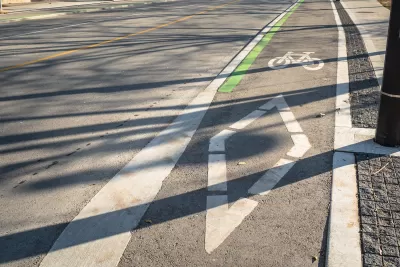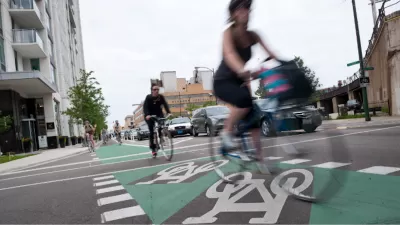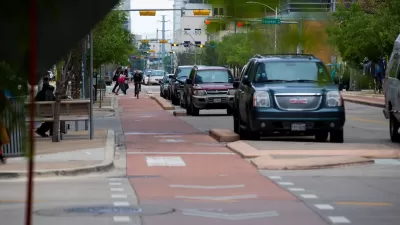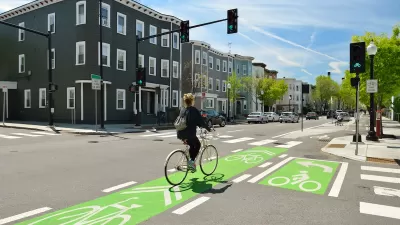Some cities are going so far as to rip out protected bike infrastructure that took years of advocacy to build.

“The trend to remove bike lanes is growing, and it is scary, and based in an imaginary world where the only thing that exists is a car and its suburban driver,” writes Ron Johnson in Momentum, drawing attention to a troubling trend that is seeing city officials in U.S. and Canadian cities removing hard-won bike infrastructure.
At the federal level in the United States, President Trump has expressed disdain for bike lanes and a desire to kill New York City’s congestion program (along with its bike infrastructure). But the trend began before his election, with cities like Ontario and San Mateo moving to destroy existing bike infrastructure.
It’s one thing to remove a painted bike lane, which offered little protection anyway. But, to invest the resources to actually remove safe and separated bike lanes that take planning, and millions of dollars of investment, is so non-sensical it’s always comedic if it weren’t so tragic.
For Johnson, part of the problem stems from the lack of long-term vision and commitment to cycling infrastructure. “A real bike network isn’t just a few painted lines or token bike boulevards. It’s a commitment to creating a connected, protected network that spans an entire city—one that allows cyclists to get from point A to point B without dodging traffic, worrying about unsafe intersections, or feeling like an afterthought in a car-dominated city.”
People who want to see bike infrastructure continue to grow must, in Johnson’s view, advocate loudly for it against the tide of opposition. “It won’t be easy, but it’s crucial that we continue to push for safe, accessible, and well-connected bike networks in our cities.”
FULL STORY: Cities Start to Backpedal on Bike Lanes: A Growing Crisis for Cyclists

Florida Considers Legalizing ADUs
Current state law allows — but doesn’t require — cities to permit accessory dwelling units in single-family residential neighborhoods.

Manufactured Crisis: Losing the Nation’s Largest Source of Unsubsidized Affordable Housing
Manufactured housing communities have long been an affordable housing option for millions of people living in the U.S., but that affordability is disappearing rapidly. How did we get here?

Research Shows More Roads = More Driving
A national study shows, once again, that increasing road supply induces additional vehicle travel, particularly over the long run.

EV Chargers Now Outnumber Gas Pumps by Nearly 50% in California
Fast chargers still lag behind amidst rapid growth.

Affordable Housing Renovations Halt Mid-Air Amidst DOGE Clawbacks
HUD may rescind over a billion dollars earmarked for green building upgrades.

Has Anyone at USDOT Read Donald Shoup?
USDOT employees, who are required to go back to the office, will receive free parking at the agency’s D.C. offices — flying in the face of a growing research body that calls for pricing parking at its real value.
Urban Design for Planners 1: Software Tools
This six-course series explores essential urban design concepts using open source software and equips planners with the tools they need to participate fully in the urban design process.
Planning for Universal Design
Learn the tools for implementing Universal Design in planning regulations.
City of Moreno Valley
Institute for Housing and Urban Development Studies (IHS)
City of Grandview
Harvard GSD Executive Education
NYU Wagner Graduate School of Public Service
City of Cambridge, Maryland
Newport County Development Council: Connect Greater Newport





























